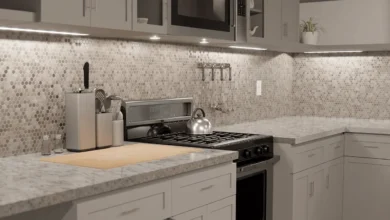How to Install Fresh Air Intake for Furnace
How to Install a Fresh Air Intake for Furnace: Ensuring good indoor air quality is crucial for the health and comfort of your home. A significant contributor to maintaining a healthy atmosphere is proper ventilation, which allows fresh air to replace stale, potentially pollutant-laden indoor air. This is where a furnace fresh air intake system comes in.

What is a furnace fresh air intake system?
A furnace fresh air intake system draws in outdoor air, filters it, and then delivers it to your furnace, where it’s mixed with the return air and circulated throughout your home. This provides several benefits:
- Improved air quality: Fresh air dilutes indoor pollutants like dust, allergens, and VOCs (volatile organic compounds), creating a healthier living environment.
- Reduced humidity: Fresh air intake can help control indoor humidity levels, especially during the summer months, preventing the growth of mold and mildew.
- Enhanced comfort: Fresh air circulation promotes a more comfortable living space, especially in tightly sealed homes.
- Increased energy efficiency: By introducing pre-conditioned outdoor air, your furnace may work less intensely to maintain desired temperatures, potentially reducing energy consumption.
Before you begin fresh air intake for furnace:
Installing a furnace fresh air intake system can be a DIY project for handy homeowners, but it’s crucial to consider certain factors beforehand:
- Local building codes: Check your local building codes for any regulations or permits required for installing a fresh air intake system.
- Furnace compatibility: Ensure your furnace is compatible with a fresh air intake system. Consult your furnace manual or the manufacturer for guidance.
- System type: Choose the appropriate system type based on your needs and budget. Common options include single-pipe and dual-pipe systems.
- Intake location: Select a suitable location for the intake vent, considering factors like weather exposure, proximity to pollution sources, and noise levels.
Installing Your Fresh Air Intake System:
Materials and Tools:
- Fresh air intake kit (matched to your furnace model)
- Ductwork (galvanized steel or insulated flexible duct)
- Drill and hole saw (size matching the intake vent)
- Aviation snips
- Sheet metal screws
- Caulk
- Level
Steps:
-
Choose the intake location: Select an exterior wall location at least 10 feet away from any exhaust vents, windows, or doors. Ensure it’s not exposed to direct sunlight, excessive rain, or snow.
-
Install the intake vent. Mark and drill a hole in the chosen wall location using the hole saw. Mount the intake vent according to the manufacturer’s instructions. Seal any gaps around the vent with caulk.
-
Cut the return air duct opening. Locate the return air duct on your furnace. Using the aviation snips, cut a hole of the same diameter as your ductwork in the return duct.
-
Connect the ductwork: Attach the ductwork to the intake vent and the return air duct opening using sheet metal screws. Ensure all connections are airtight and sealed with caulk.
-
Run the ductwork: Route the ductwork through the wall, maintaining a slight downward slope to prevent condensation buildup. Secure the ductwork to the wall studs using duct straps or other appropriate fasteners.
-
Terminate the ductwork: Inside the furnace room, connect the ductwork to the fresh air intake port on your furnace. Consult your furnace manual for the specific location and connection method.
-
Test and commission the system. Turn on your furnace and check for proper airflow through the fresh air intake system. Listen for any leaks or unusual noises. If everything functions correctly, enjoy the benefits of fresh, clean air circulating throughout your home!
Additional Tips:
- Consider installing a damper in the ductwork to adjust the amount of fresh air intake for furnace, especially during colder months.
- Regularly clean or replace the filter in your fresh air intake system to maintain optimal performance.
- If you encounter any difficulties during the installation process, consult a qualified HVAC technician for assistance.
Bonus:
- Explore different fresh air intake for furnaces beyond the basic system, such as those with integrated heat exchangers or humidity control features.
- Consider the environmental impact of increased ventilation and explore energy-efficient options to minimize potential drawbacks.
By following these steps and considerations, you can successfully install a furnace.




